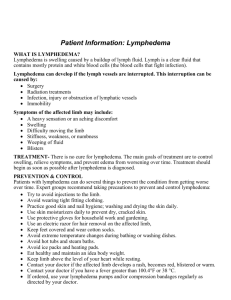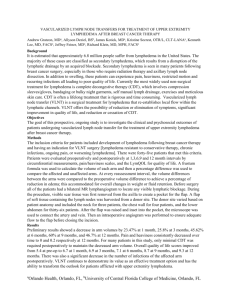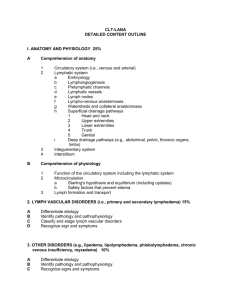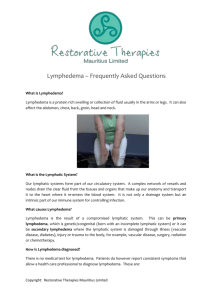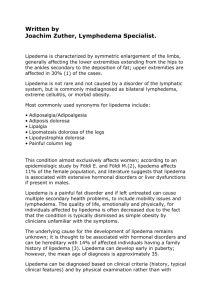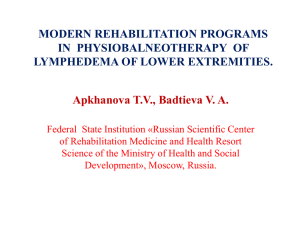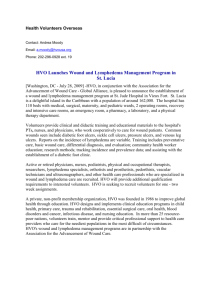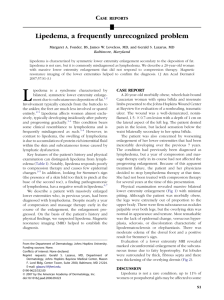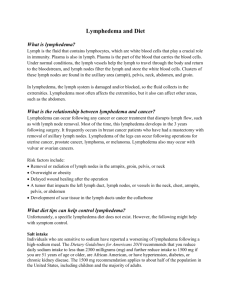Read more - Great Lakes Surgical Associates
advertisement
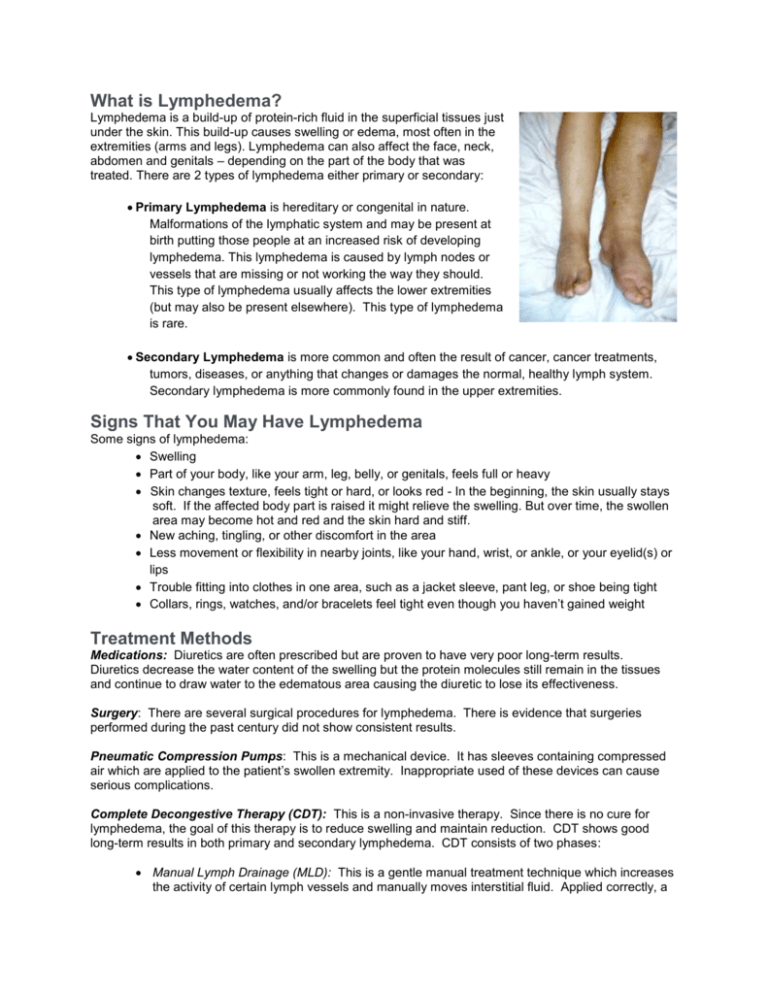
What is Lymphedema? Lymphedema is a build-up of protein-rich fluid in the superficial tissues just under the skin. This build-up causes swelling or edema, most often in the extremities (arms and legs). Lymphedema can also affect the face, neck, abdomen and genitals – depending on the part of the body that was treated. There are 2 types of lymphedema either primary or secondary: Primary Lymphedema is hereditary or congenital in nature. Malformations of the lymphatic system and may be present at birth putting those people at an increased risk of developing lymphedema. This lymphedema is caused by lymph nodes or vessels that are missing or not working the way they should. This type of lymphedema usually affects the lower extremities (but may also be present elsewhere). This type of lymphedema is rare. Secondary Lymphedema is more common and often the result of cancer, cancer treatments, tumors, diseases, or anything that changes or damages the normal, healthy lymph system. Secondary lymphedema is more commonly found in the upper extremities. Signs That You May Have Lymphedema Some signs of lymphedema: Swelling Part of your body, like your arm, leg, belly, or genitals, feels full or heavy Skin changes texture, feels tight or hard, or looks red - In the beginning, the skin usually stays soft. If the affected body part is raised it might relieve the swelling. But over time, the swollen area may become hot and red and the skin hard and stiff. New aching, tingling, or other discomfort in the area Less movement or flexibility in nearby joints, like your hand, wrist, or ankle, or your eyelid(s) or lips Trouble fitting into clothes in one area, such as a jacket sleeve, pant leg, or shoe being tight Collars, rings, watches, and/or bracelets feel tight even though you haven’t gained weight Treatment Methods Medications: Diuretics are often prescribed but are proven to have very poor long-term results. Diuretics decrease the water content of the swelling but the protein molecules still remain in the tissues and continue to draw water to the edematous area causing the diuretic to lose its effectiveness. Surgery: There are several surgical procedures for lymphedema. There is evidence that surgeries performed during the past century did not show consistent results. Pneumatic Compression Pumps: This is a mechanical device. It has sleeves containing compressed air which are applied to the patient’s swollen extremity. Inappropriate used of these devices can cause serious complications. Complete Decongestive Therapy (CDT): This is a non-invasive therapy. Since there is no cure for lymphedema, the goal of this therapy is to reduce swelling and maintain reduction. CDT shows good long-term results in both primary and secondary lymphedema. CDT consists of two phases: Manual Lymph Drainage (MLD): This is a gentle manual treatment technique which increases the activity of certain lymph vessels and manually moves interstitial fluid. Applied correctly, a series of MLD treatments decreases the volume of the affected extremity to a normal or near normal size and is applied daily in the first phase of therapy. Compression Therapy: Lymphedema damages the elastic fibers in the skin. In order to prevent re-accumulation of fluid it is necessary to apply sufficient compression to the affected extremity. Compression therapy also improves the function of the muscle pumps and helps to reduce fibrotic tissue and promotes venous and lymphatic return.


